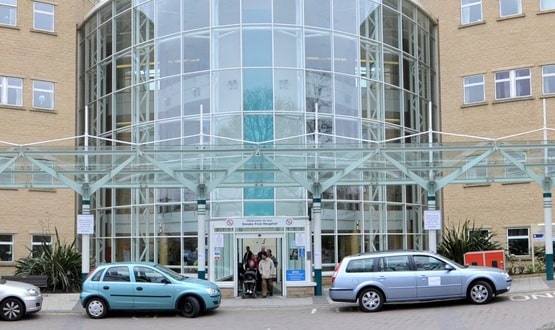Hancock: How the data strategy will improve care and fuel innovation
- 22 June 2021

In an exclusive blog for Digital Health, the Secretary of State for Health and Care Matt Hancock outlines how the draft data strategy will help improve care, fuel innovation and save lives.
In our fight against coronavirus, one of the most powerful tools we possessed was the power of data.
Data helped us to identify the people most vulnerable to coronavirus and ask them to shield, allowed new care pathways like virtual wards, and powered vital research that helped us discover new treatments for Covid that have saved over a million lives so far around the world.
This pandemic has shown once and for all that data saves lives. So just as we recognise the hardship and devastation that this virus has brought, we must also recognise the phenomenal progress we’ve seen in the use of data.
This crisis has led to one of the greatest transformations to how we live and work in peacetime, and it’s the smart use of data has made that possible. We must raise our sights, and go further, learning lessons from the crisis
Bottling spirit
Today we’re publishing our Data Strategy, which sets out, in one place, how we’ll bottle the spirit we’ve seen throughout these arduous eighteen months, and use the power of data to build back better and save lives.
First, it shows how we’ll save lives through improving and integrating care.
Imagine a world in which colleagues have all the information they need at their fingertips to deliver more accurate diagnoses and more personalised care. This interoperability is vital.
We must make that vision a reality, and in doing so we’ll improve the patient experience by removing barriers, like having to repeat information or perform duplicate tests, that frustrate patients and that get in the way of integrated care.
To do this, we’ll be extending our programme of Shared Care Records so colleagues can see a patient’s information in one shared record, regardless of what system they use. This will mean staff spend less time looking for information and more time focusing on caring for their patient.
This is all part of our mission to put patients in control of their data.
Patients will be able to access their test results, medications, procedures and care plans from across all parts of the health system through patient apps, such as the NHS App, just as easily as they can check the weather on their phones.
We’ll also be more transparent about how data is used, so patients can easily see, for example, what life-saving research they’ve supported.
We’ll be doing this by knocking down silos and joining up data from across the whole health and care system.
So our strategy has a dedicated section on social care and a new duty on health and care organisations to share anonymous data, so it can be shared more seamlessly.
Right architecture in place
Second, we can save lives through putting the right architecture in place.
Data architecture is not simply abstract but has had a huge impact on the frontline. Some 27% of doctors who responded to a BMA survey said they lost more than four hours a week because of inefficient hardware or systems. That’s time when they could be caring for patients.
We’ll be rebuilding our data architecture based on the values that have served us so well during this pandemic. Openness, transparency and interoperability.
After all, the NHS belongs to everyone. So we’ve committed to making all new source code that we produce or commission open and reusable, so we can make sure everyone feels the benefits.
We’ll reshape our legacy systems so the NHS is a platform, with a data layer separate from the application layer, where systems can talk to each other and work together, and the right data can be accessed by the right people in real-time through APIs.
Our Strategy sets out how we’ll get here. It contains commitments like a standards and interoperability strategy, using consistent user identifiers, based on the use of NHS numbers across all services, and boosting the number of health and care APIs.
Drawing on the best and brightest
Third, we’ll save lives through fuelling innovation.
The pandemic has clearly shown that we must draw on the best and brightest from all walks of life.
We need to safely bring tech pioneers in to work with our own innovators across health and care, so we have a porous border between the NHS and the outside world.
For example, providing safe access to data so researchers in trusted research environments can develop vaccinations for Covid-19, or for new treatments for cancer to be developed.
We want to give innovators clear guidance on the safe and appropriate use of health and care data, and provide confidence that we can deploy promising technology at scale across the system.
The strategy shows our plans for data partnerships that allow the NHS and industry to create tools and insights from data, underpinned by clear principles for safety and confidentiality.
And, again, the separation of the data layer from the application layer will allow providers to offer the application software, but the data will be stored separately and securely, so we have a consistent data platform across the NHS.
This means innovation can take place safely and securely, and we can create a more dynamic market for applications, avoiding dependency on any one provider.
These are just a few of the commitments in this comprehensive plan, which builds on the amazing work we’ve seen over the past 18 months.
We’ve published it in draft, because we want to bring to bear expertise from far and wide, and hear from you about where we can go further.
So please have your say and join us in our mission: making sure that data makes a difference.





6 Comments
Perhaps the former Secretary of State for Health might now begin to understand how people feel about the coercive invasion of their privacy without their knowledge or consent. Rather too late, unfortunately. We can only hope that there can now be a change away from this abusive culture and policy, for which he was answerable.
….and always kick a man when he’s down. Particularly when he makes a worthy attempt to drag the NHS, kicking and screaming, into the 21st century.
What meaning exactly does Humpty Dumpty attach to “safety and confidentiality” and how, exactly, does that square with making local data sharing mandatory? I always had the idea that confidentiality meant that the patient controlled with whom the data should be shared. Someone is confused – must be me of course. Anyway, we are in for a lot of lovely safety and confidentiality, which sounds wonderful. Well, depending on what it means, that is.
Data strategies are well and good. The NHS App insists that I have had only one jab but in fact I have had two. I have trying to get this corrected for the last six weeks. All to no avail. There appears to be no mechanism for the data subject to get items corrected in any realistic way. However, I am still trying, as vaccinations passports are likely to become important. As the IT phrase goes Garbage in Garbage out!
GDPR Article 5: Principles relating to the processing of personal data
(1) Personal data shall be: . . .
(d) accurate and, where necessary, kept up to date; every reasonable step must be taken to ensure that personal data that are inaccurate, having regard to the purposes for which they are processed, are erased or rectified without delay (‘accuracy’); . . .
Data Protection law is all well and good, except that the NHS habitually disregards it completely, on an industrial scale, and not, as here, by mistake
Could we please draw a distinction between giving patients access to their data, and giving them control of their data? These are very different things and conflating them allows policies that take control of their data away from patients to be presented as the opposite. I feel that such confusions are at best unhelpful, and are open to exploitation for political ends.
Comments are closed.